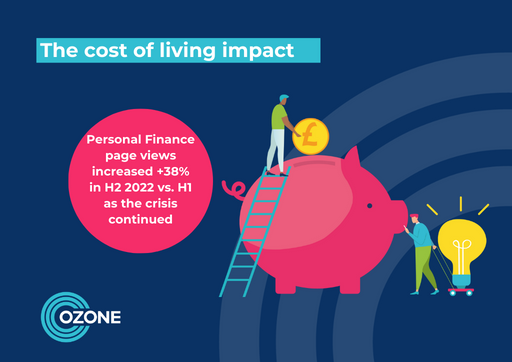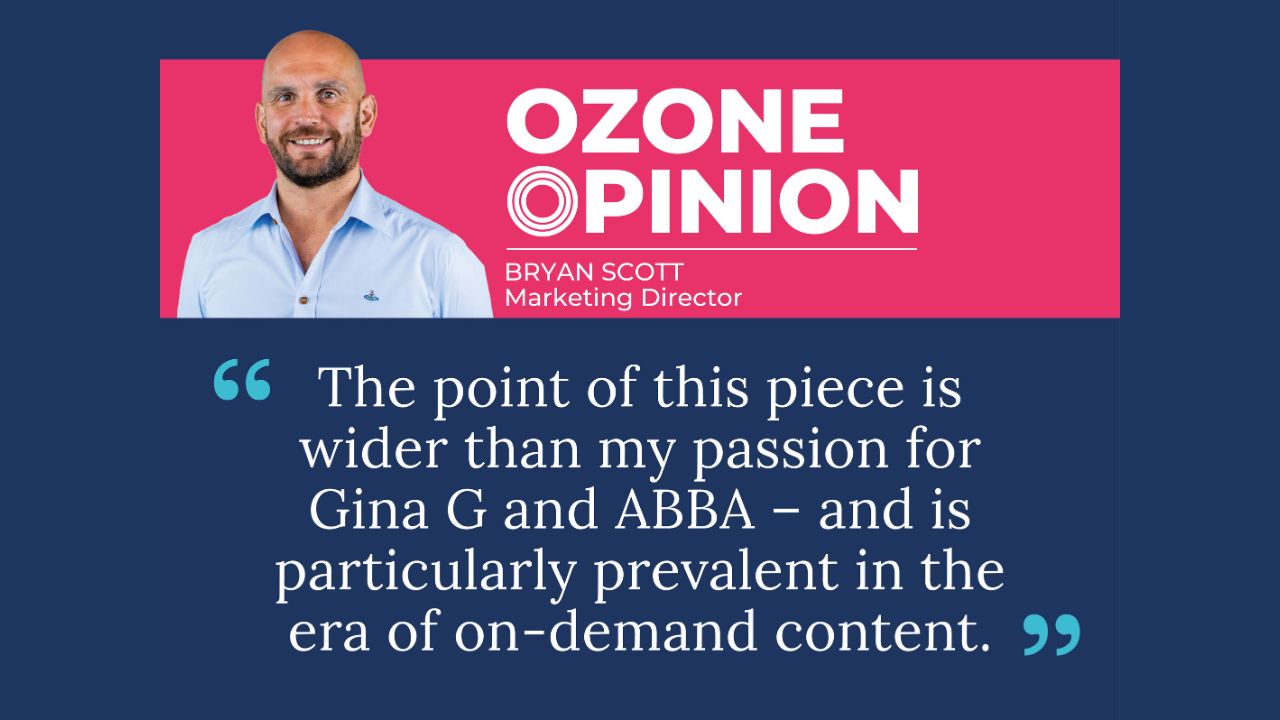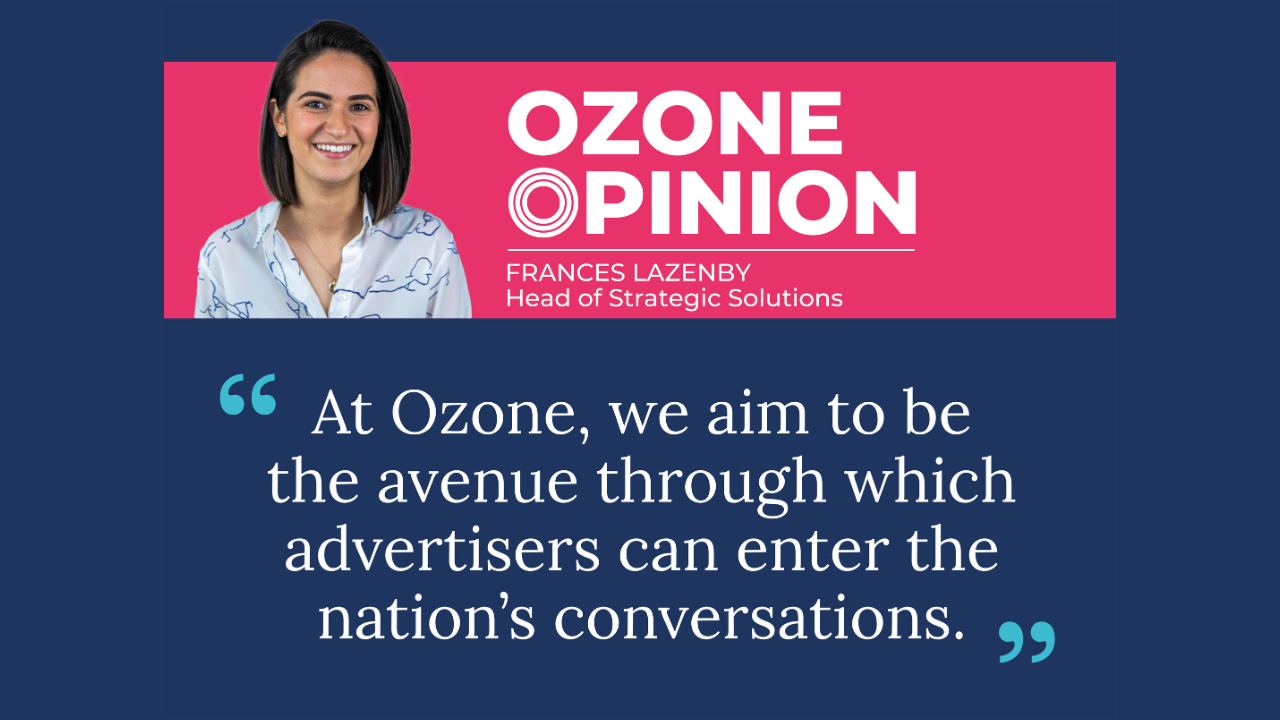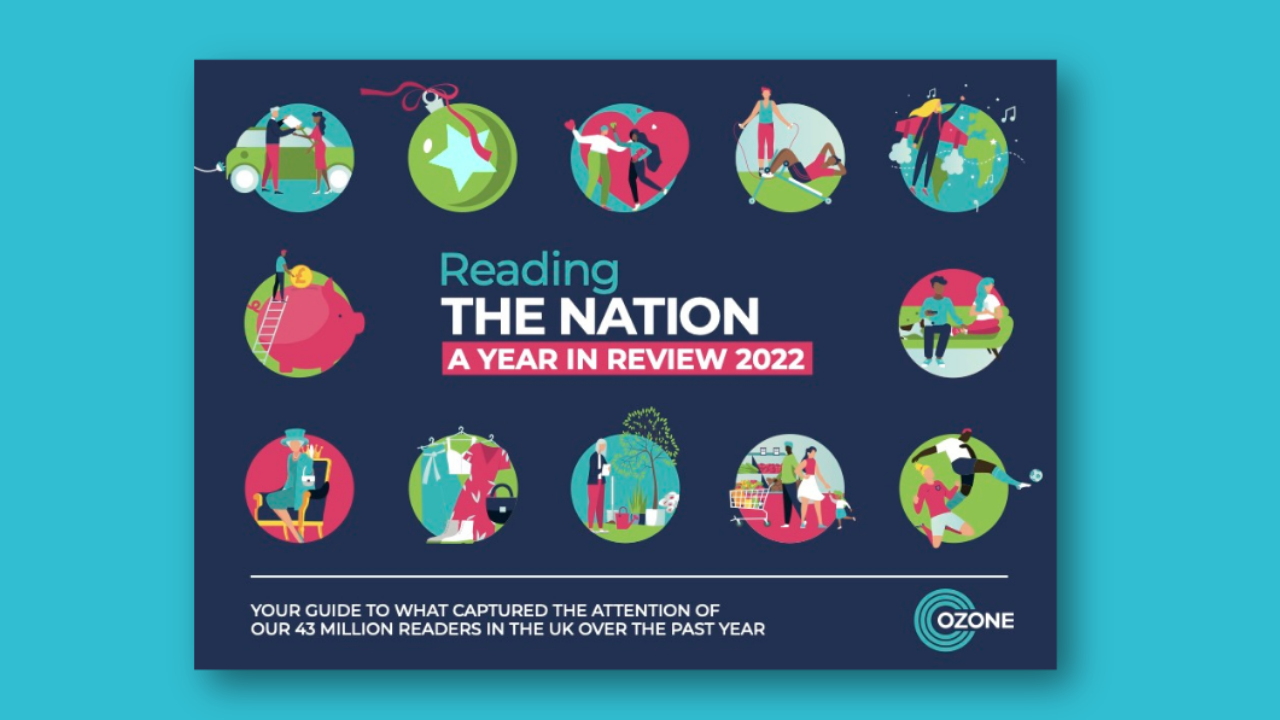Our strategic agency sales lead Natalie Dawson examines the value of trusted premium publisher content during the cost of living crisis in our latest Ozone Opinion from Reading the Nation, A Year in Review.
No single issue has dominated our attention more in 2022 than the cost of living crisis. From the rising price of food and fuel to escalating energy bills, living costs for all of us have continued to creep up and up. Record inflation and high interest rates have exacerbated matters further, while the Government’s attempts to manage the crisis have had mixed results.
While the cost of living affects us all in driving up prices and bringing living standards down, it has had a disproportionate impact on those with fewer financial resources. It’s not just the unemployed or those claiming benefits, those on lower or middle incomes are also struggling to make ends meet.
We’ve seen bubbling discontent about wages for the lower paid boil over as transport, postal workers and nurses have joined picket lines nationwide to demand fairer pay to help cover higher rent and bills. Most of these people – many of whom were applauded as key workers during the Covid-19 pandemic – are sadly having to make the choice between eating and heating as the salaries that covered costs, with very little to spare previously, are no longer stretching far enough.
>
“As this crisis continues, our publishers have responded to growing consumer demand for trusted information by producing content that’s more relevant and helpful to them.”
With a number of converging factors contributing to the crisis and the financial ins and outs of it often complex, many consumers can be left scratching their heads as to how they can best understand and navigate it. As we have continued to adapt to these challenging times, the value of premium publishers and their investment in quality journalism is proving to be essential.
Research published by Newsworks in 2022 shows that 62% of Brits believe journalists are playing a “valuable role” in covering cost of living; a third say journalism is more important now than before the crisis; while three-quarters say advertisers should invest more in trusted sources to ensure they can continue to cover the big issues.
It will come as no surprise then that we’ve witnessed the value consumers place in our publishers in the data we see. There has been eye-watering growth in engagement with content related to the crisis. In 2022, 689m Personal Finance page views increased by an incredible +86% year on year. For context, that year there had already been huge interest in the content as a result of the pandemic and the financial support schemes, including furlough, available at the time to help people through it.
The first three months of 2022 saw Personal Finance page views increase by +40% compared to the final quarter of 2021 as the year began with higher levels of engagement than we’d typically expect. Added to a seasonal focus on setting new household budgets for the year ahead and the tax self assessment deadline, the first of several changes to the energy price cap in early February drove more page views than normal. Then, due to heavy economic sanctions imposed on Russia as a consequence of its invasion of Ukraine in late February, the growing cost of wholesale gas further compounded the energy bills part of the crisis.
Another expected engagement driver in March was the Government’s Spring Statement, which saw taxes rise through increases to National Insurance contributions while benefits were cut. Early April’s ISA deadline day, again, saw expected engagement growth with related content. And while page views remained relatively flat in the second quarter, they were still considerably higher – almost double – compared to the same quarter the year before. Despite Q2’s brief distraction as the nation celebrated the Platinum Jubilee and Euro 2022 glory, engagement remained high as inflation continued to grow. Key topic drivers included growing Financial Assistance page views – and the Government Support topic in particular – as the first of a series of cost of living payments were paid out by the government.
However, as the crisis continued, engagement growth has too with page views +38% in H2 versus H1. The biggest driver of growth occurred in September – a record month for Personal Finance engagement with 91m page views, up by almost three-quarters month on month – as the Government’s mini-budget spooked the financial markets and dragged millions more consumers into the crisis. The impact of ‘Trussonomics’ saw interest rates hit a 14-year high and threatened the financial stability of some pension funds, leading to an unprecedented intervention by the Bank of England. October saw content about Pensions and Mortgages grow +55% and +35% respectively.
As this crisis continues, our publishers have responded to growing consumer demand for trusted information by producing content that’s more relevant and helpful to them. From information about what Government budgets mean to them or where financial support can be found, to tips about living more frugally, our publishers have produced a wide range of cost of living content.
With recession for the UK forecast to last until the middle of the year, tax increases on the horizon and the Government’s energy price guarantee ending in April 2023, engagement with related cost of living content will be a sad, yet inevitable focus for the year ahead.
Get your free copy now
If you’d like to get your free digital copy of Reading the Nation, A Year in Review 2022, you can do so by hitting the download button. Alternatively, you can request a printed copy by emailing [email protected].





